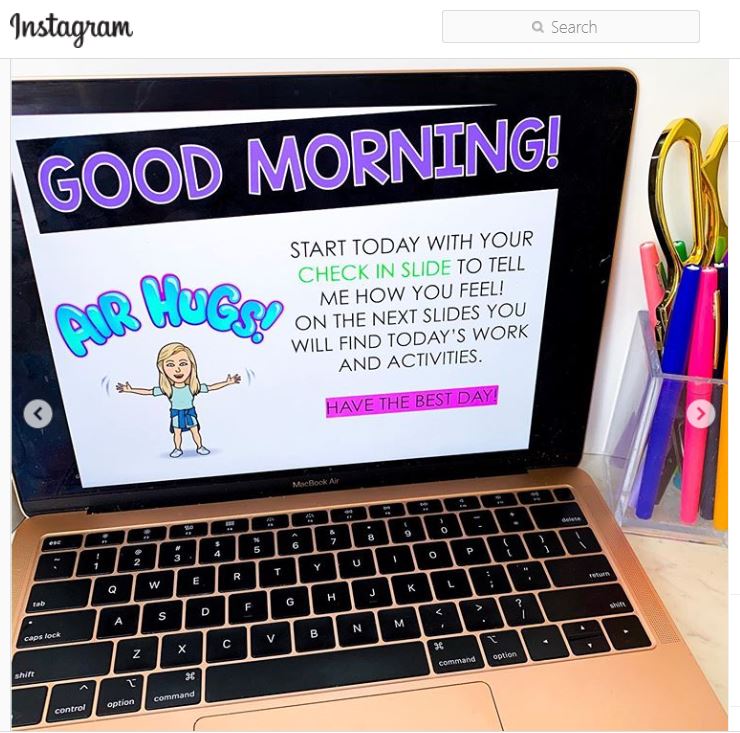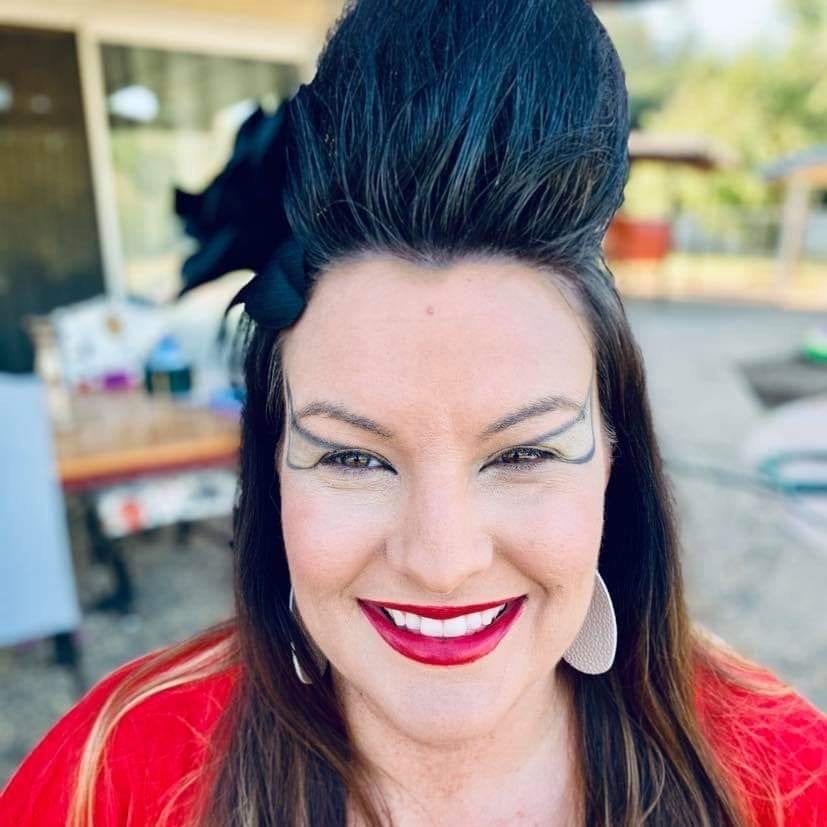
Ready to bond with students you’ve never met? Read on.

Kelcey Ellis
Kelcey Ellis always looks forward to meeting students on the first day of school. But this year will be different for Ellis, who teaches fourth and fifth graders with mild to moderate disabilities. Instead of greeting them at the door with a smile and personal interaction, she will begin the year online.
“Last year, when we transitioned to online learning during the pandemic, I had the benefit of already building strong rapport with my students,” says Ellis, an education specialist at Jefferson Elementary School and member of the San Diego Education Association. “This year will be different and more of a challenge. But I am determined to build strong relationships with new students so I’m not a stranger on a screen. I’m going to tackle this with love.”
Ellis, like many CTA members, wonders how she can build relationships between herself and individual students online — as well as foster a strong relationship with her entire class. Also important to her is helping students connect to each other, by building community to decrease isolation.
In the following, we offer advice from CTA members who have been teaching online for years and have lots to say about forging connections from scratch with students ranging from kindergarten to college.
“It’s hard to know if someone is in a seventh grade funk or something is really wrong, so I’m always checking in.” —Anna Cordero
Jonathan Ausubel
Chaffey College Faculty Association president
Community College Association treasurer
English instructor at Chaffey College

Jonathan Ausubel
- Give students an unstructured place and time to meet. I do this 10 minutes before class starts. It’s similar to students walking down the hallway and chatting before class so they can communicate with each other. From interacting within this space, they are more comfortable interacting together in class.
- Ask thought-provoking questions. Let’s say we’re reading “The Tell-Tale Heart” by Edgar Allan Poe. I might ask: “Was the narrator insane at the time? Why or why not?” By asking a cognitive question they must respond to in writing, you can make sure that the whole class participates in every discussion, and that the students responding to their peers say more than “good job.” You can also tell a lot about individual students this way. Can they follow instructions? Do they have atrocious spelling and maybe dyslexia? Should they be referred for special services?
- Ask for feedback and use their suggestions. I do anonymous surveys throughout a semester and ask students what is working well for them and what isn’t. I often take their ideas and incorporate them into instruction. For example, if students say they are having trouble finding assignments, I will make them more conspicuous and let them know I appreciate their suggestion. It tells them: “You showed me a problem and I fixed it.” This makes for a stronger personal connection whether a student is 9 or 19.
Brianna Carroll
California Virtual Educators United president
High school social studies teacher at California Virtual Academies

Brianna Carroll
- Encourage office hours. Some students won’t talk to teachers individually unless there is a reason, so give them a reason. Tell them to come in so you can grade their paper and go over the answers together. Offer extra credit for a few minutes of online help in an area they are struggling with. Let students know that you might be online, but you are here for them.
- Sponsor fun activities. Book clubs. Hobby clubs. Art clubs. Peer tutoring. Have students use the microphone to communicate with each other, in Zoom or other platforms in online rooms. Play games in programs like Kahoot! When learning is fun and collaborative, it builds relationships.
- Make phone calls. If someone is not responsive or engaging in the classroom, it’s best to check in by phone. Sometimes it’s better to call students and ask how they are doing, because doing all of your communication by email can lead to misunderstandings.
Angela Bauer Young
California Virtual Educators United
Kindergarten teacher at California Virtual Academies

Angela Bauer Young
- Reach out before school starts. I send out postcards welcoming students to my classroom and letting them know we are going to have a fun year. Then I make an initial phone call to parents and ask to speak to their child. I ask how their summer was, if they have any pets, what their hobbies are, or what movies they like. I try to get to know a little bit about them so I can tie that into instruction when class begins.
- Have students create posters or write profiles, like “Hi, I’m Bob, my favorite food is hot dogs, I have four goats, and l like to play soccer.” Then I create a PowerPoint of what students have given me and show it on the first day of school so students can learn about each other.
- Do fun things like “Pet Week” where students can show their pets and talk about them online. Or they can share about their favorite stuffed animals and answer questions about them from other kids. Hold live dance parties on Fridays. Have virtual birthday parties. Or assign students jobs such as leading the flag salute, being the “weather person,” monitoring the calendar or “collecting” answers from everyone. These activities make students feel part of a community.

@teachcreatemotivate
Fola Odebunmi
United Faculty North Orange County CCD
Economics teacher at Cypress College

Fola Odebunmi
- Welcome them warmly and set a positive tone. I thank them for taking my class, acknowledge that COVID-19 creates many challenges, and let them know I understand they have a lot on their plate. I convey that we are all in this together. I tell them I am a grandmother, I’m good at listening, and that no question is stupid; the only stupid question is the one unasked. I let them know I’m collaborating with them so that they can reach their goals.
- Encourage student-to-student communication. At the beginning of each class, I encourage my students to introduce themselves and engage in a discussion with at least one other student on the class discussion board. I ask them to upload photos of themselves and connect with other students for extra credit. My goal is to create a classroom community through active participation.
- Put them in groups. I place students in groups of about six or seven. I will wait until after the first quiz. I don’t want to lump all the A’s together or all the C’s together. I want to mix them up so they can rely on each other and work on group projects. Sometimes students will say they are in an online class because they prefer working alone. I tell them I’m preparing them for the real world of business. They won’t be successful in isolation. They have to network and learn to get along with people. A tree does not make a forest.
- Provide feedback and encouragement. If students did not do well on an exam, I tell them it’s not the end of the world and let them know there is online tutoring. I communicate with students who are doing well and say, “great work.” If a student got a D on a test and then receives a B, I’ll say “fabulous” and congratulate them for improving. When my class is over, many students thank me for offering them encouragement. It’s a balancing act teaching online: You don’t want to overwhelm them. But you don’t want to leave them alone for too long. If you do, they may feel lost and alone. Staying connected is extremely important.
Anna Cordero
California Virtual Educators United
Seventh grade math and history teacher at California Virtual Academies

Anna Cordero
- Monitor interactions and behavior. I keep binders for all my students; it can be harder to keep track of everyone online. I might note that Suzy loves purple and use that in a lesson or connect with her by wearing purple. Or I may jot down that Johnny isn’t talking at all. I might ask him to check in with me after class to make sure that everything is all right. It’s hard to know if someone is in a seventh grade funk or something is really wrong, so I’m always checking in.
- Use private messaging. Let’s say I’m doing a vocabulary lesson and see someone struggling. I can send them a private message and help them figure it out, or they can ask me a private question. It’s a great way to build trust on Zoom or any live platform and help students keep up.
- Create “community space” for students to share things. You can ask simple questions like “What’s your favorite snack?” to get discussions started. It paves the way for more meaningful discussions later, such as sharing that a family member is struggling with COVID or other challenges. In this way, students build trust and community with each other. They can also post artwork or poems to showcase their creativity.
- Have hangout time. My students and I go on virtual field trips and have movie afternoons. Last year students wanted to watch Call of the Wild together. They had to turn off their devices and I’d pause the movie and ask questions occasionally to make sure everybody was focused. It is a nice way to bond.